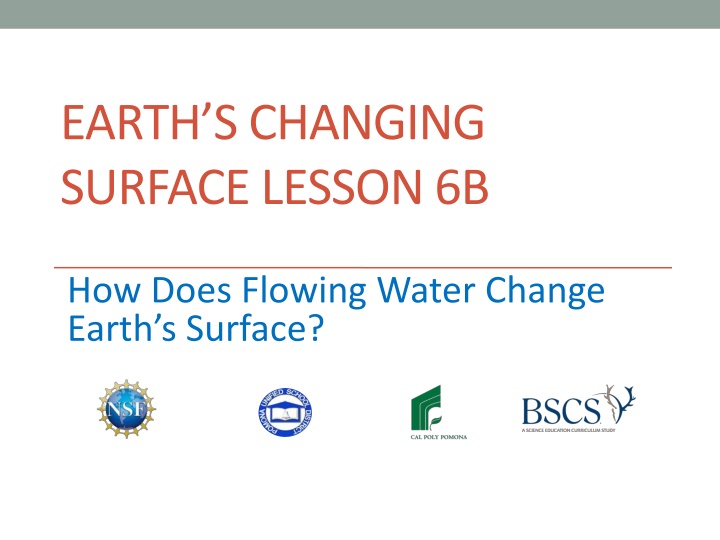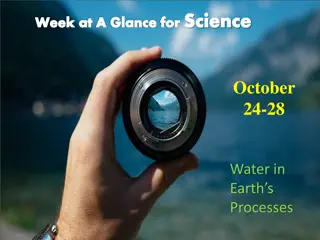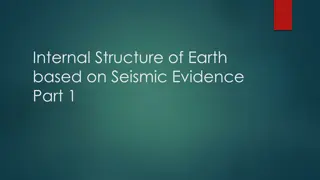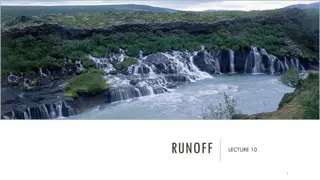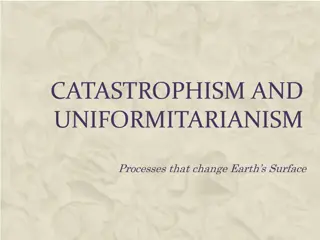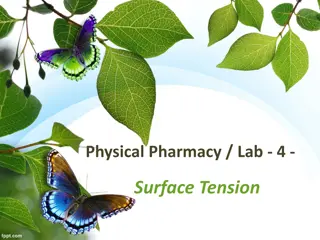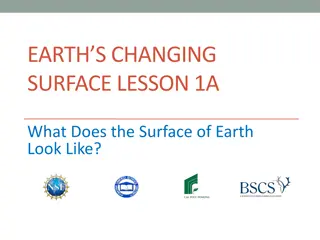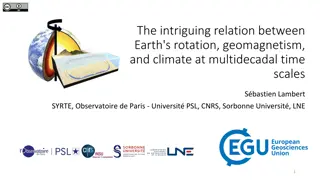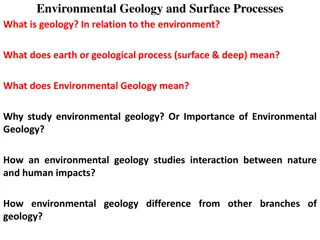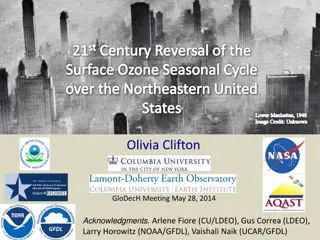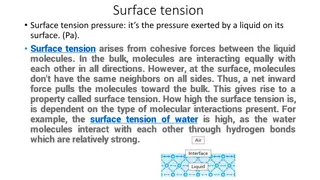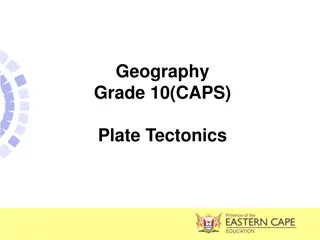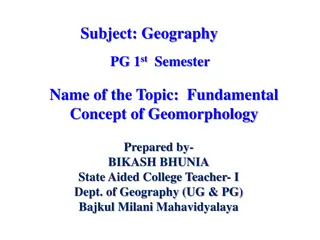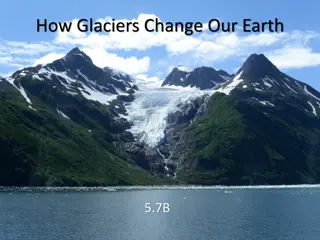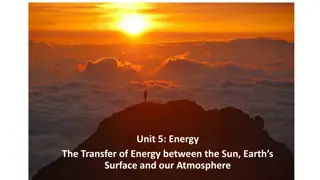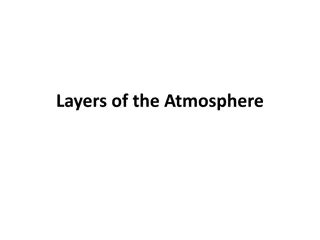EARTH’S CHANGING SURFACE LESSON 6B
Explore how the flow of water shapes and transforms the Earth's surface in this engaging lesson. Learn about erosion, sedimentation, and the powerful impact of water on our planet's geography. Discover how rivers, streams, and other water bodies influence the dynamic changes in the landscape over time.
Download Presentation

Please find below an Image/Link to download the presentation.
The content on the website is provided AS IS for your information and personal use only. It may not be sold, licensed, or shared on other websites without obtaining consent from the author.If you encounter any issues during the download, it is possible that the publisher has removed the file from their server.
You are allowed to download the files provided on this website for personal or commercial use, subject to the condition that they are used lawfully. All files are the property of their respective owners.
The content on the website is provided AS IS for your information and personal use only. It may not be sold, licensed, or shared on other websites without obtaining consent from the author.
E N D
Presentation Transcript
EARTHS CHANGING SURFACE LESSON 6B How Does Flowing Water Change Earth s Surface?
Review: Weathering and Erosion Focus questions from previous lessons: 1. Can mountains grow so tall they reach outer space? Why or why not? 2. How does flowing water change Earth s surface? What science ideas did we learn about that answer the first focus question? How do you think these science ideas relate to the second focus question?
Todays Focus Question How does flowing water change Earth s surface?
Investigation: How Water Changes Earth s Surface 1. What you need for today s investigation: Your science notebooks Handout 6.1 (Stream-Model Observation) from the last lesson 2. Locate your data and observations from parts 1 and 2 of the handout. 3. You should have two sets of drawings and written descriptions of erosion and deposition from parts 1 and 2.
Investigation: How Water Changes Earth s Surface As stream scientists, you ll Reflect on what happened in your stream models during the last investigation. Try to make sense of your data and observations. Work independently and in small groups to answer the questions in part 3 of your handout.
Investigation: How Water Changes Earth s Surface Independently: 1. Review your written observations, ideas, and drawings from last time. 2. Answer the first three questions in part 3 of your Stream-Model Observations handout. 3. For questions 1 and 2, make sure to include your observations for both the low-angle model and the steep-angle model you used for parts 1 and 2 of the investigation.
Investigation: How Water Changes Earth s Surface In your small group: 1. Share your steam-model observations, ideas, and drawings. Listen to the ideas others share and revise your own ideas if theirs are better. 2. Discuss the first three questions in part 3 of your handout. (Spend most of your time talking about question 3.) 3. For questions 1 and 2, talk about any differences you noticed between the low-angle model and the steep-angle model.
Follow-Up Questions Which earth materials in the stream model were easy for the water to carry away? Why do you think so? Which earth materials were harder for the water to carry away? Why do you think so? Where were most of the earth materials deposited? Why do you think this happened?
Follow-Up Questions What differences did you notice when the stream-table angle was lower and when it was steeper? How would you explain these differences? How did erosion and deposition change when the angle of the stream table changed?
Key Science Ideas On steep mountains, streams or rivers flow downhill so fast that most earth materials get carried a long way until they re deposited in a lake or ocean. When a stream or river is less steep, the water moves more slowly, and earth materials are deposited along the banks and on the streambed or riverbed.
Real-Life Examples of Flowing Water How is our stream model like a real stream? How is it different from a real stream? Where do you think erosion and deposition happen in these streams? Photo courtesy of Corel Photo courtesy of Corel
Lets Summarize! Question 4 (and our focus question): Think about your stream-model observations and answer this question: How does flowing water change Earth s surface? Write an answer to the focus question in one or two complete sentences. Make sure to use these words in your answer: Erosion Building up Earth s surface Deposition Wearing down
Can Mountains Reach Outer Space? In lesson 5, you wrote an answer to this focus question in your notebooks: Can mountains grow so tall they reach outer space? Look at your answer and the sentences you wrote today about erosion and deposition. Then write a new best answer to this question in one or two sentences. Make sure to use the words erosion and deposition in your answer.
Next Time In this unit, we ve been exploring how Earth s surface is built up and worn down. Volcanic eruptions, plate collisions, and deposition are constantly building up Earth s surface. At the same time, weathering and erosion are constantly wearing it down. Next time, we ll revisit our unit central questions: Why isn t all of Earth s surface flat? What causes the surface to look different in different places?
